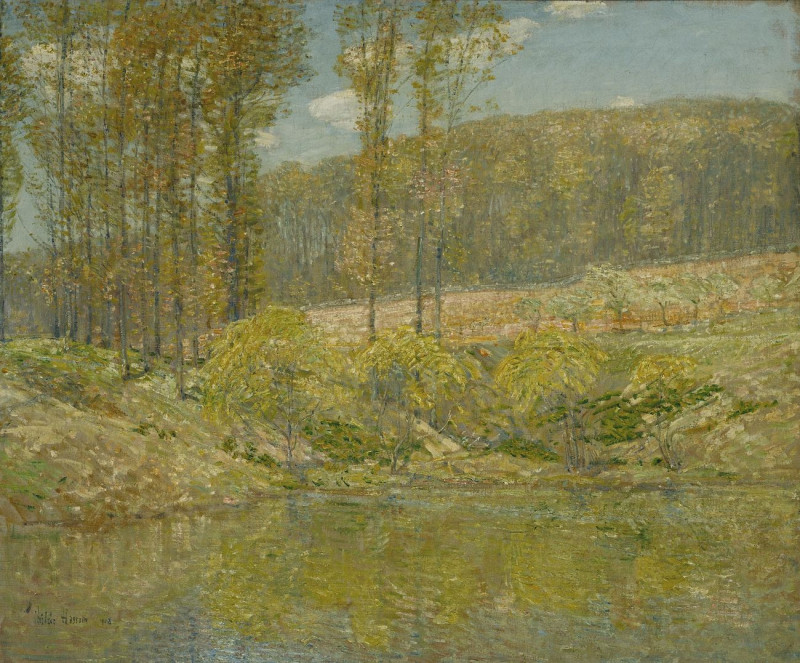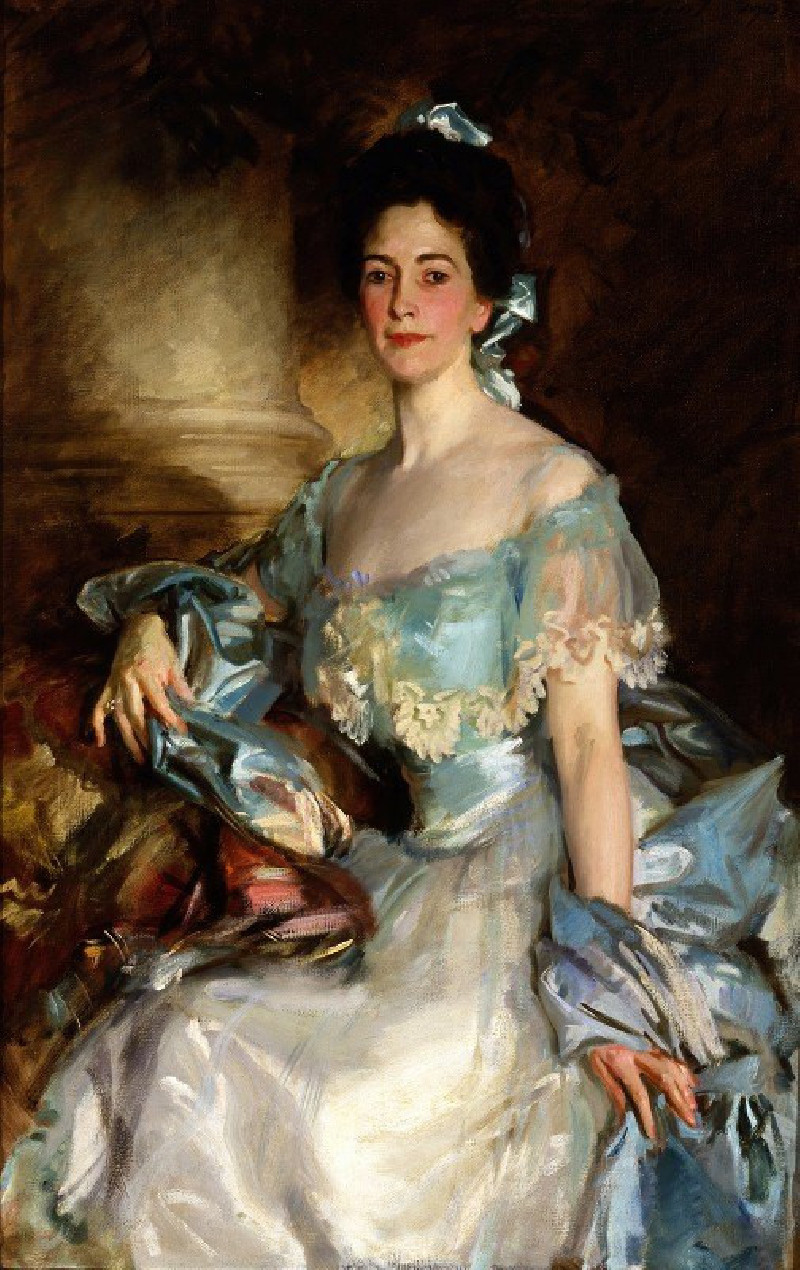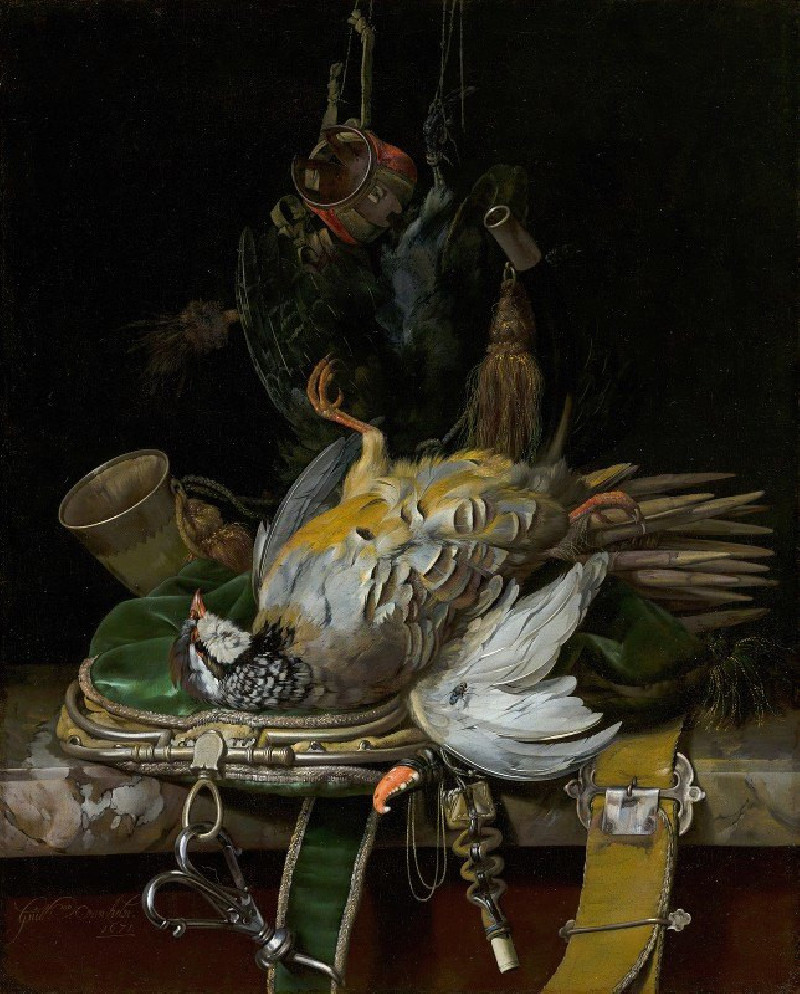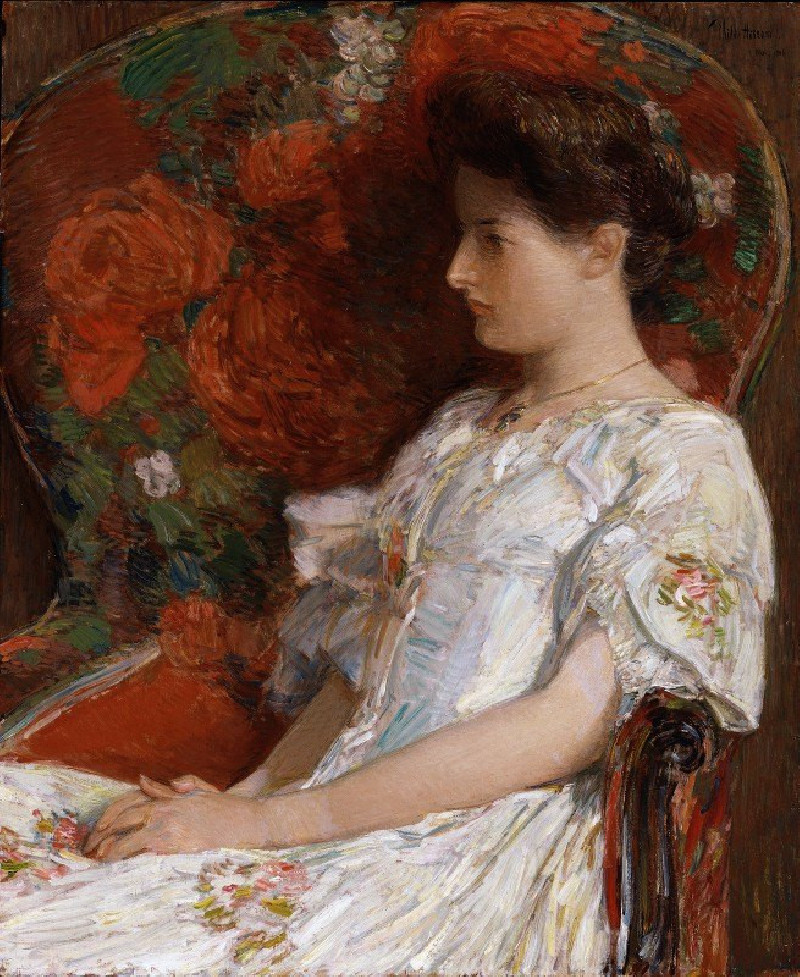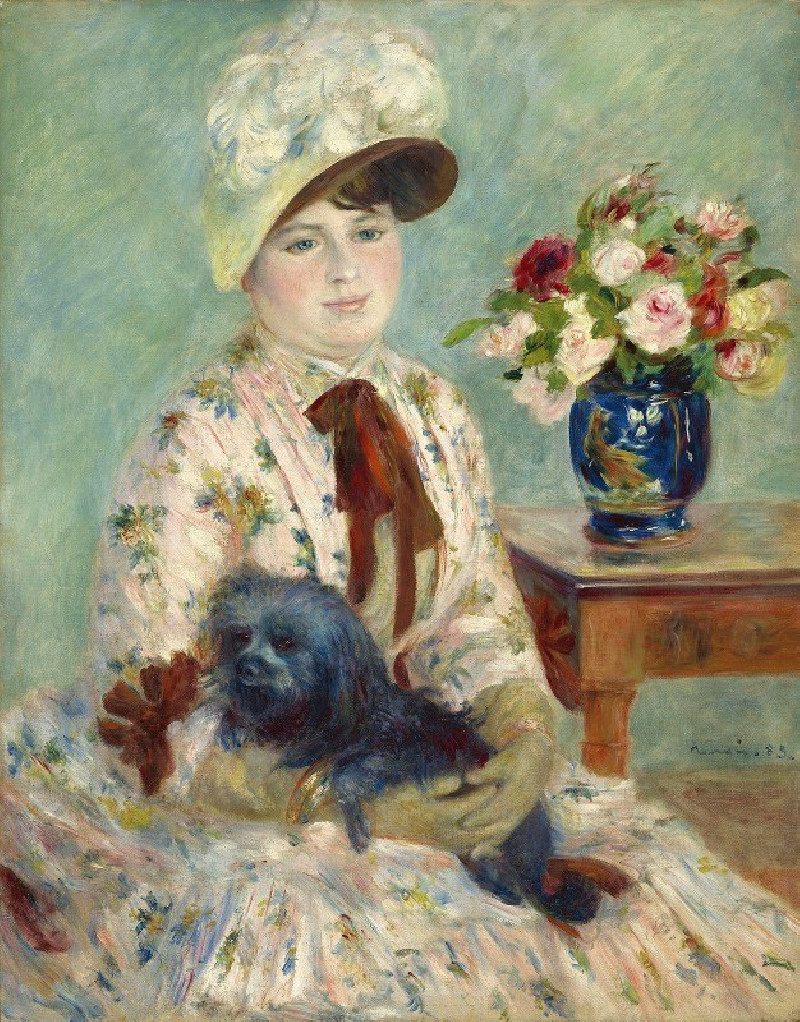Examples of Chinese ornament, Pl.82 (1867)
Technique: Giclée quality print
Recommended by our customers
More about this artwork
The delicate artwork titled "Examples of Chinese Ornament, Pl.82" crafted by the renowned Owen Jones in 1867, splendidly captures the intricacies of traditional Chinese motifs. This particular painting is part of a series, showcasing Jones' appreciation for and understanding of Eastern decorative arts which he widely studied and presented in his works. The painting features an elegant arrangement of repeated floral elements, specifically lush, vibrant peonies intertwined with slender and graceful foliage, rendered in a stunning palette of red, green, and hints of blue on a soft beige background.The composition, while symmetrical and harmoniously balanced, exudes a natural fluidity, characteristic of traditional Chinese decor. Each flower and leaf is meticulously detailed, emphasizing the aesthetic principles of balance and rhythm, commonly found in East Asian art. This piece serves not only as a celebration of the beauty found in nature but also as a testament to the cross-cultural appreciation and exchange that Owen Jones promoted through his works.
Delivery
Returns
Owen Jones was an English-born Welsh architect. A versatile architect and designer, he was also one of the most influential design theorists of the nineteenth century. He helped pioneer modern colour theory, and his theories on flat patterning and ornament still resonate with contemporary designers today.

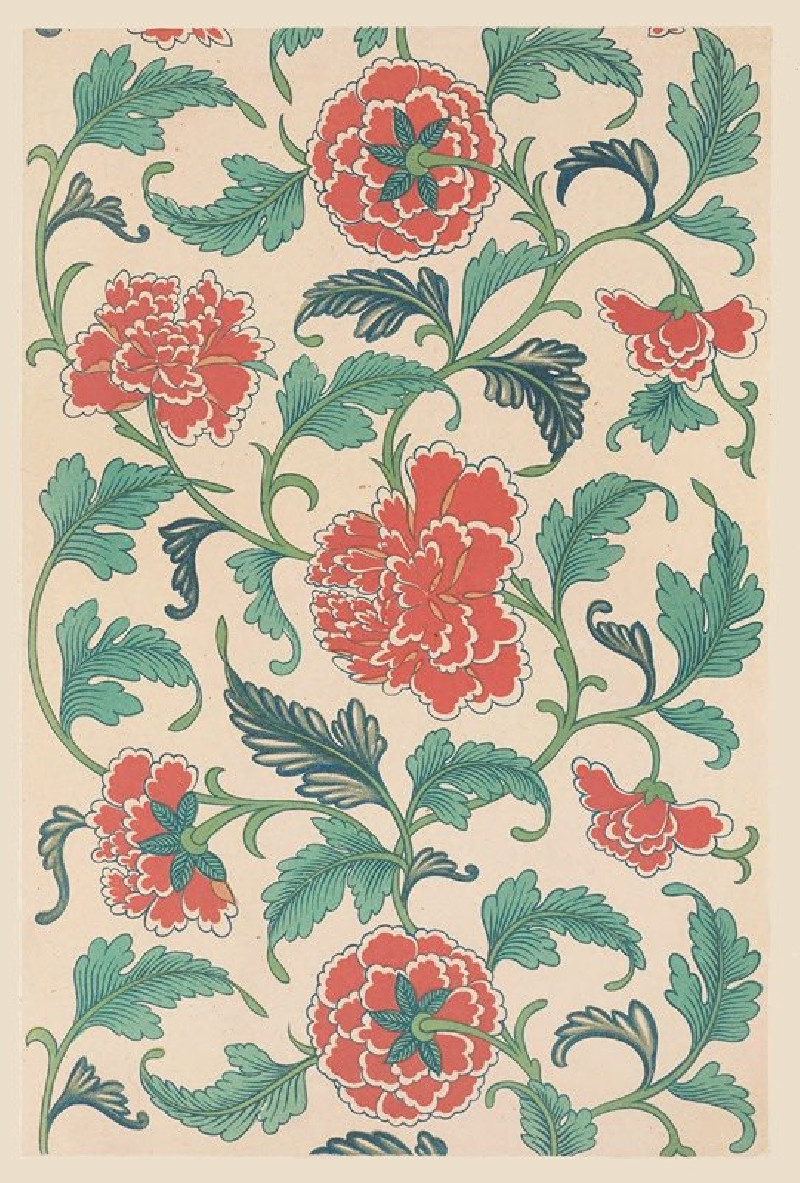
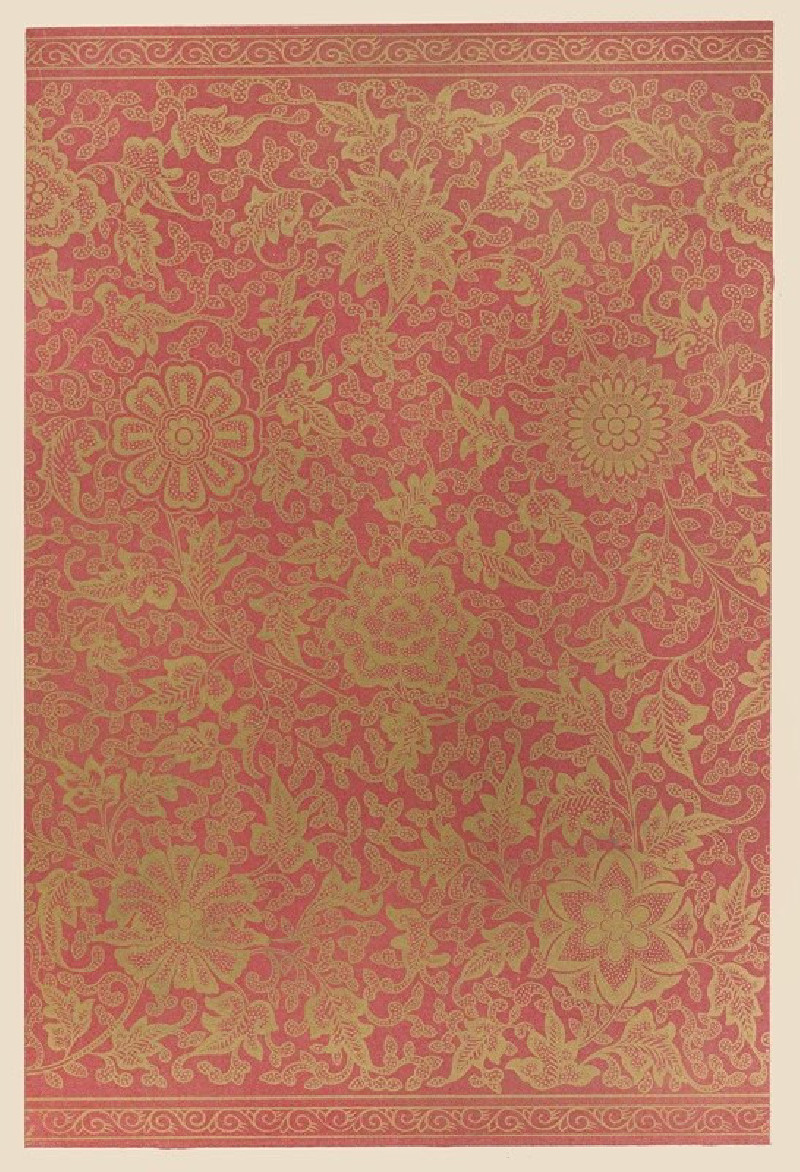

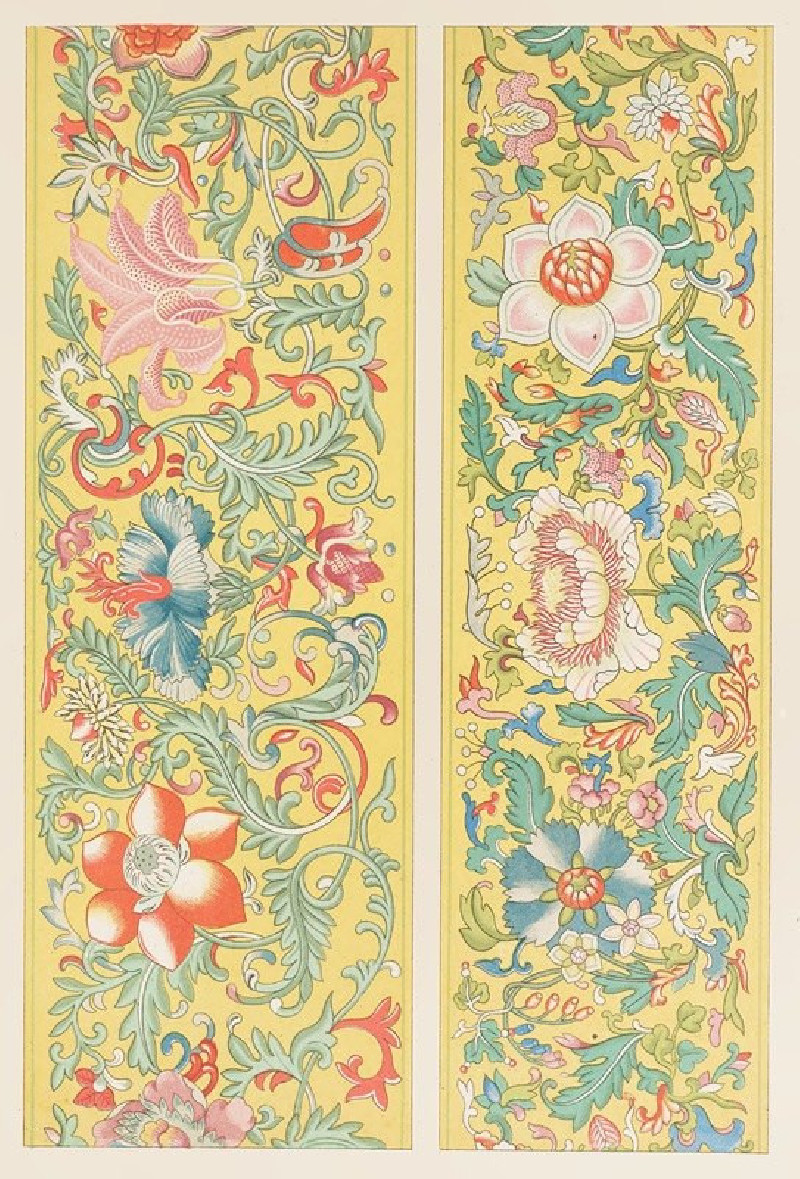
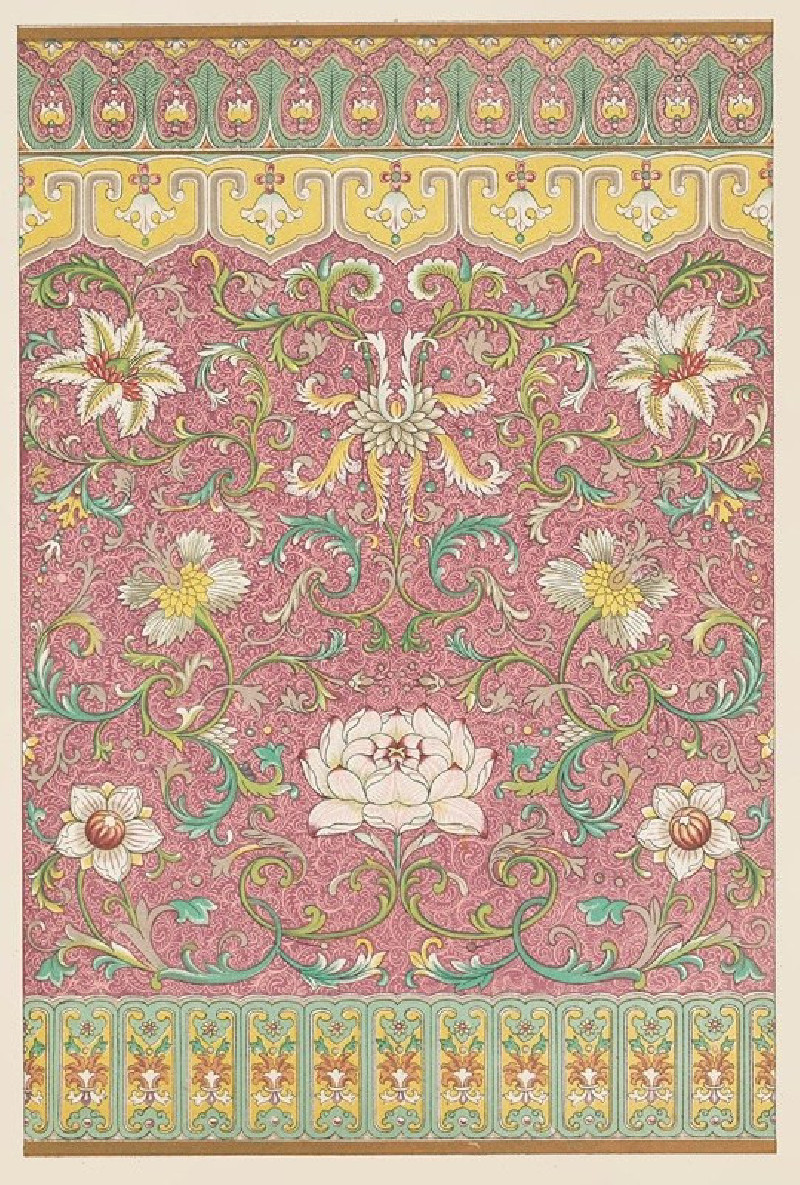

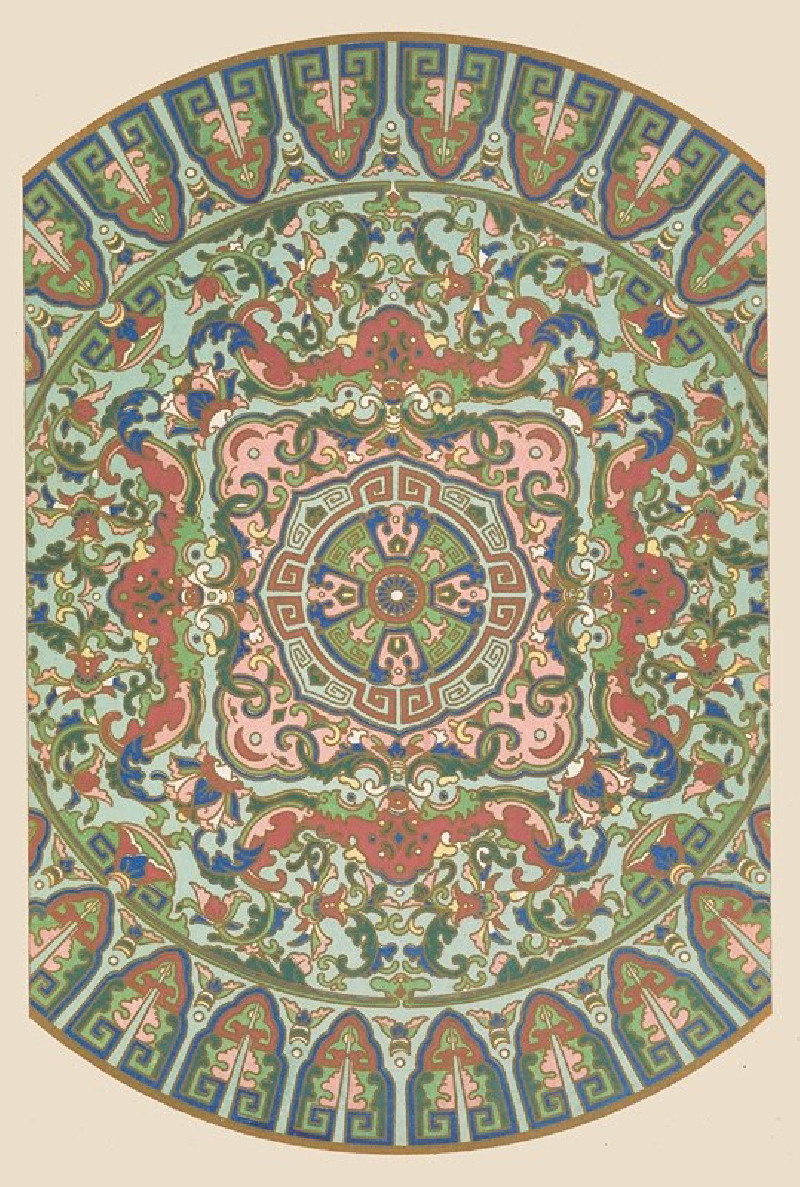
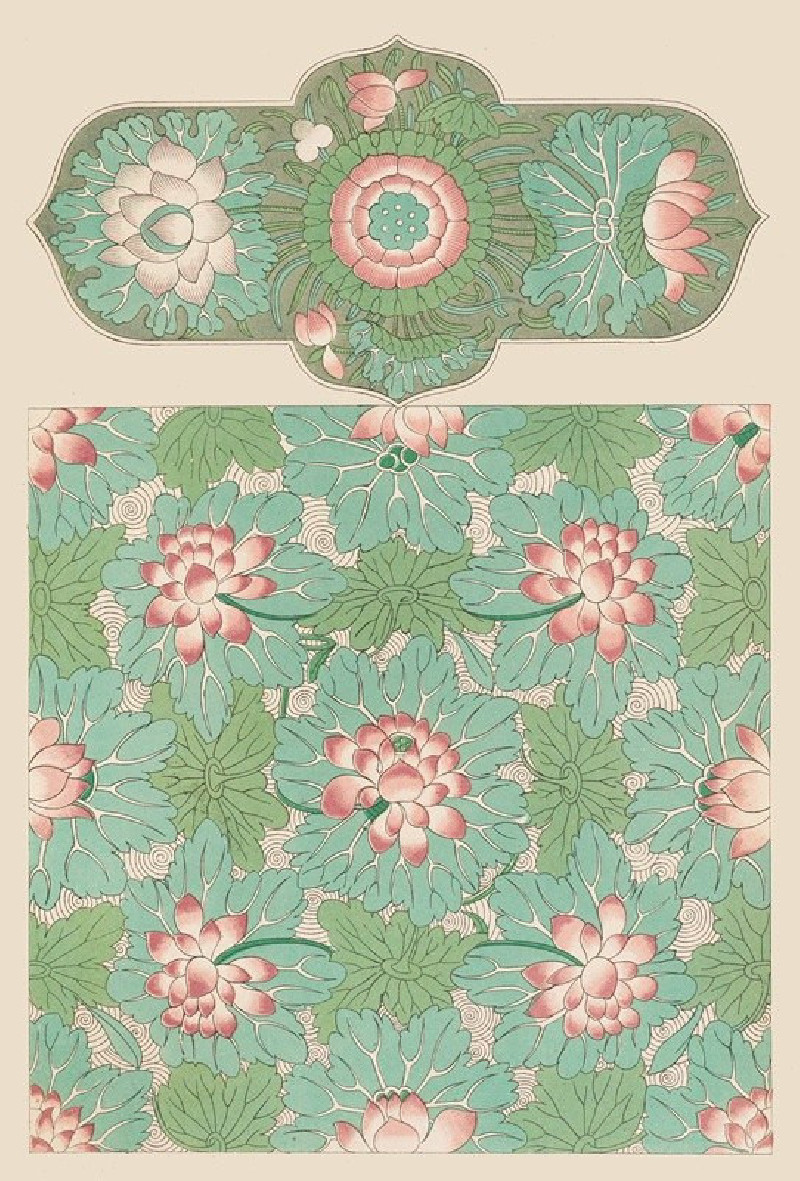
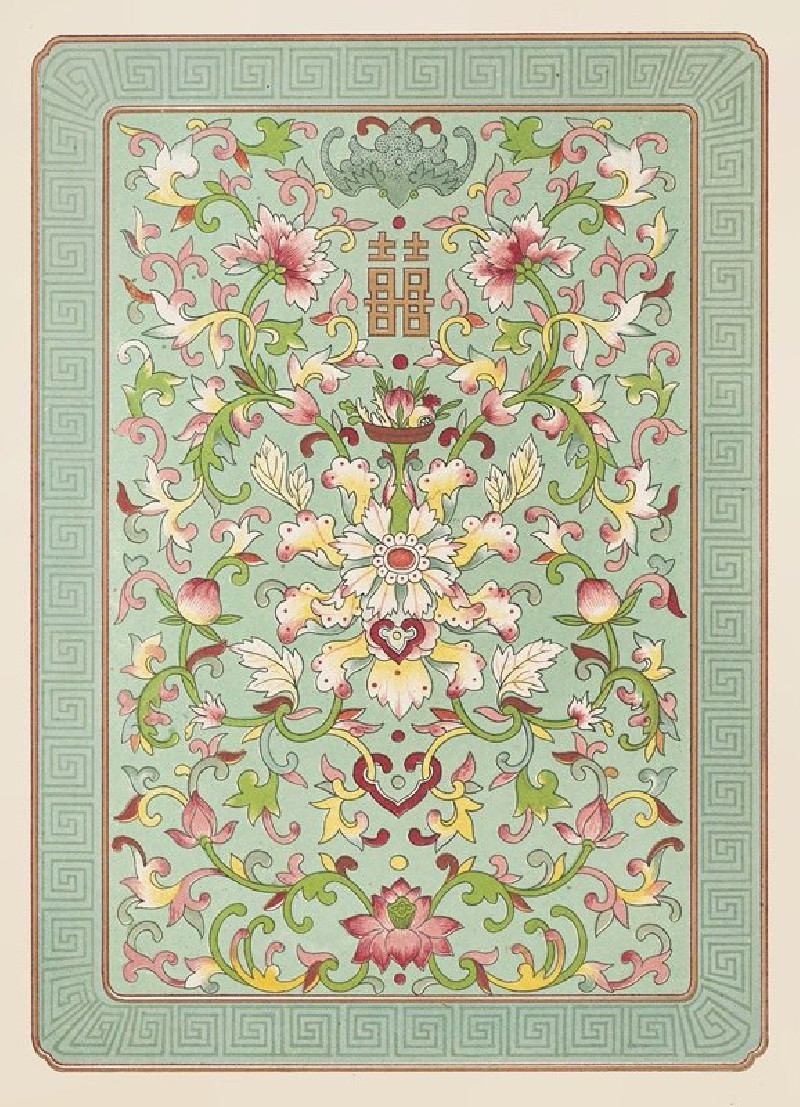

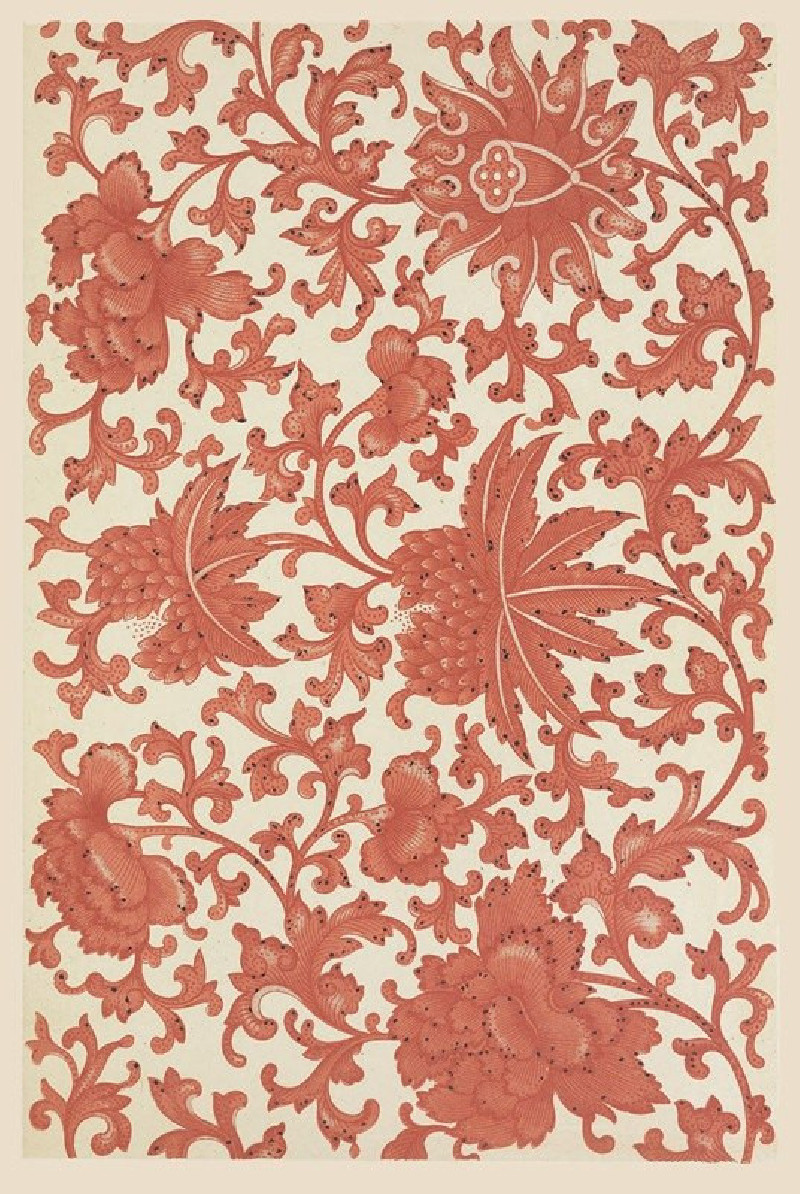
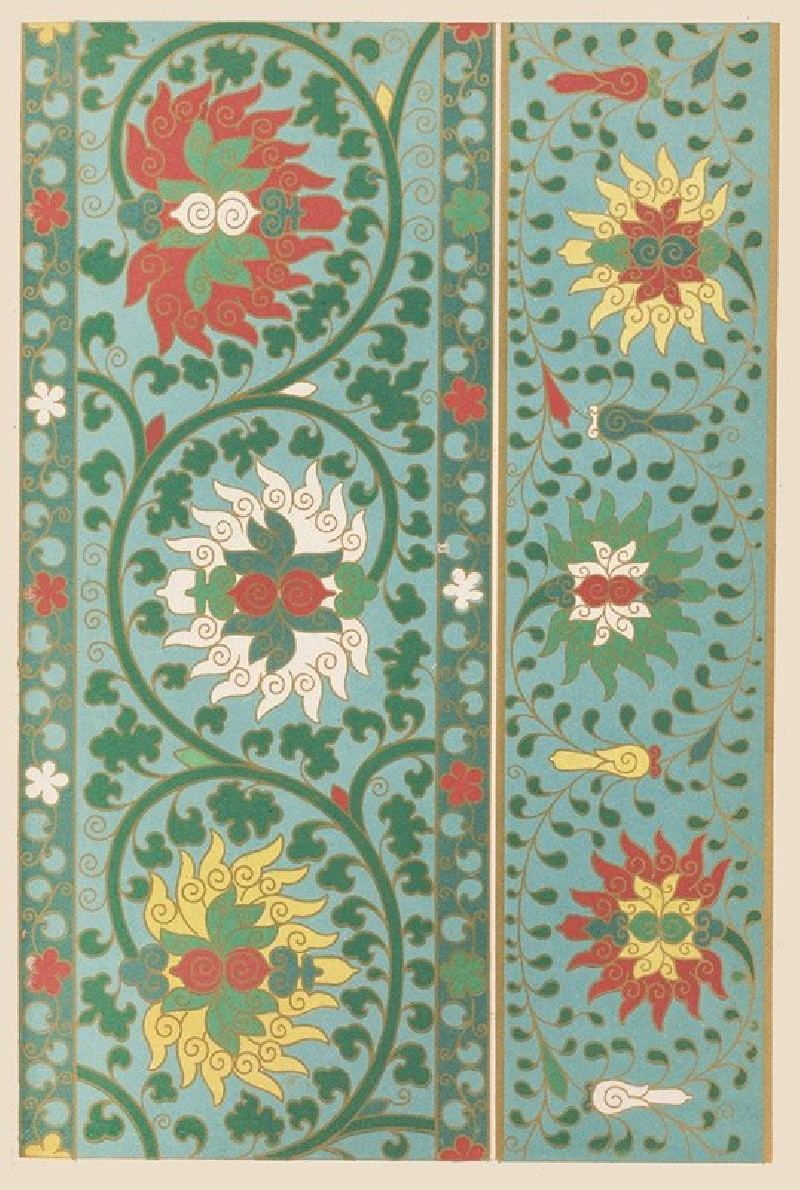


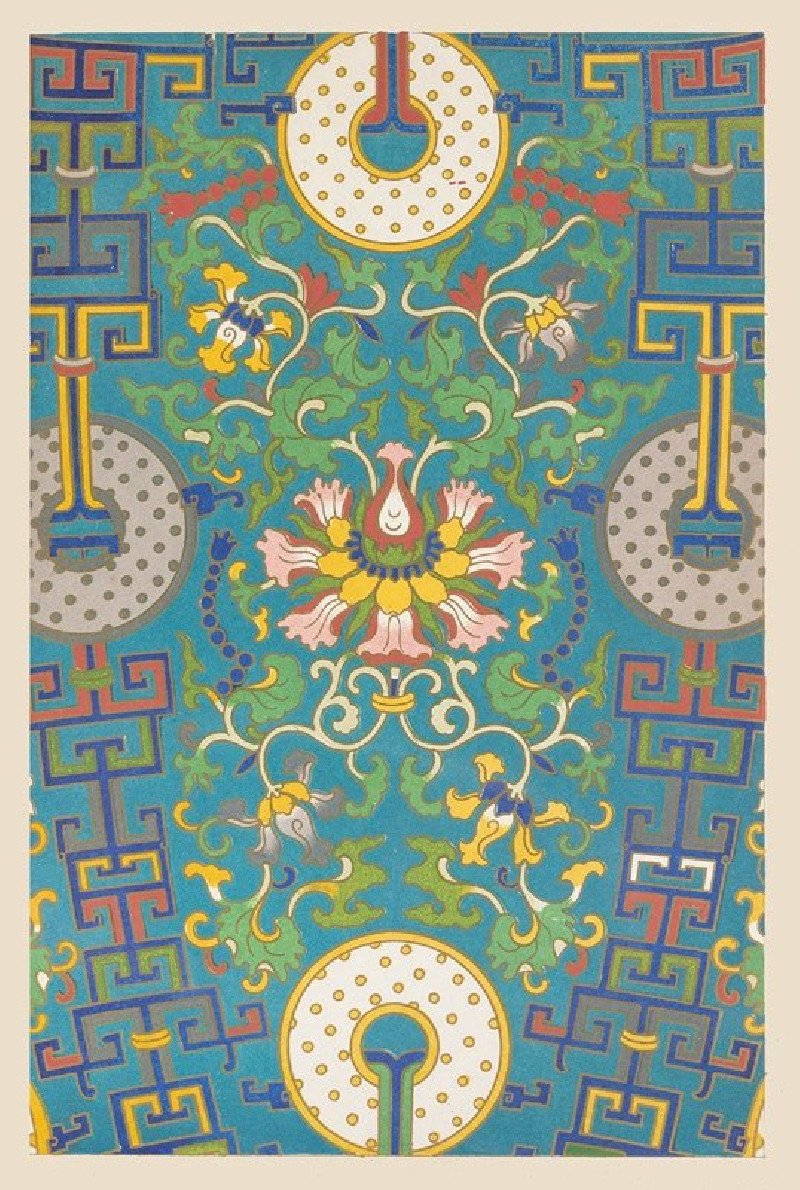



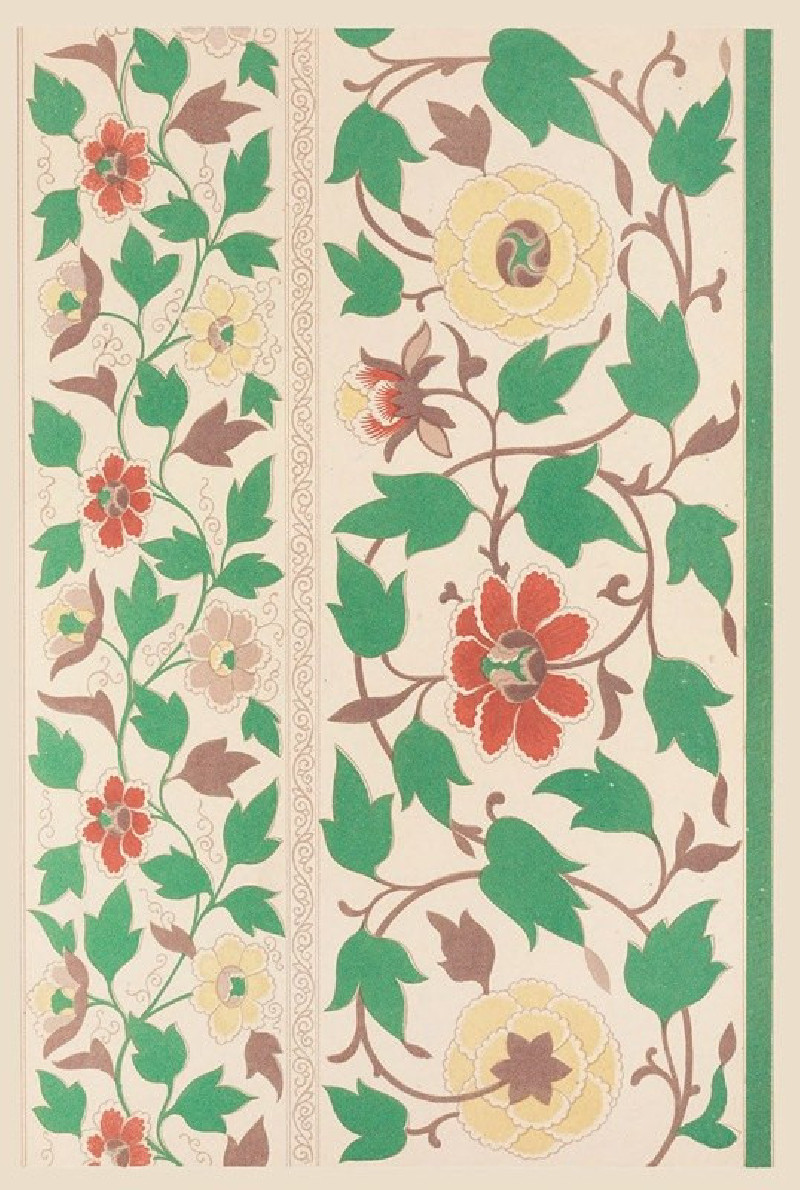
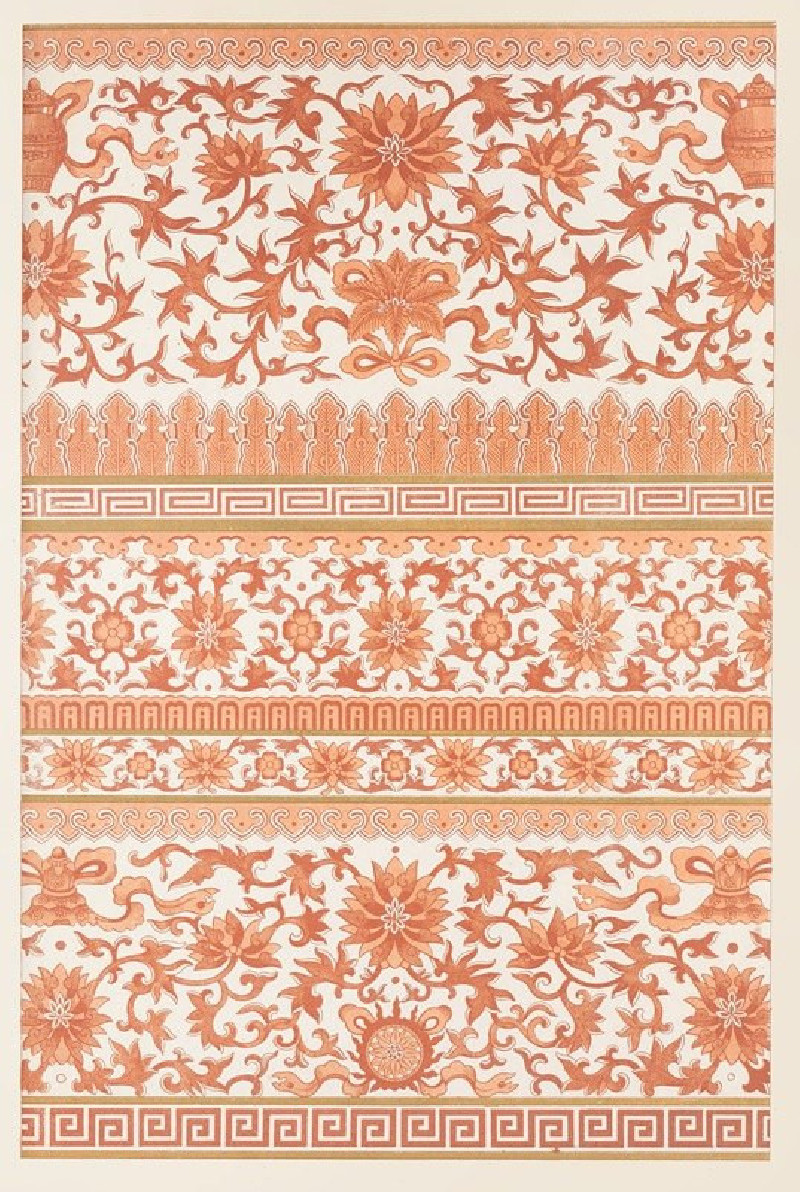
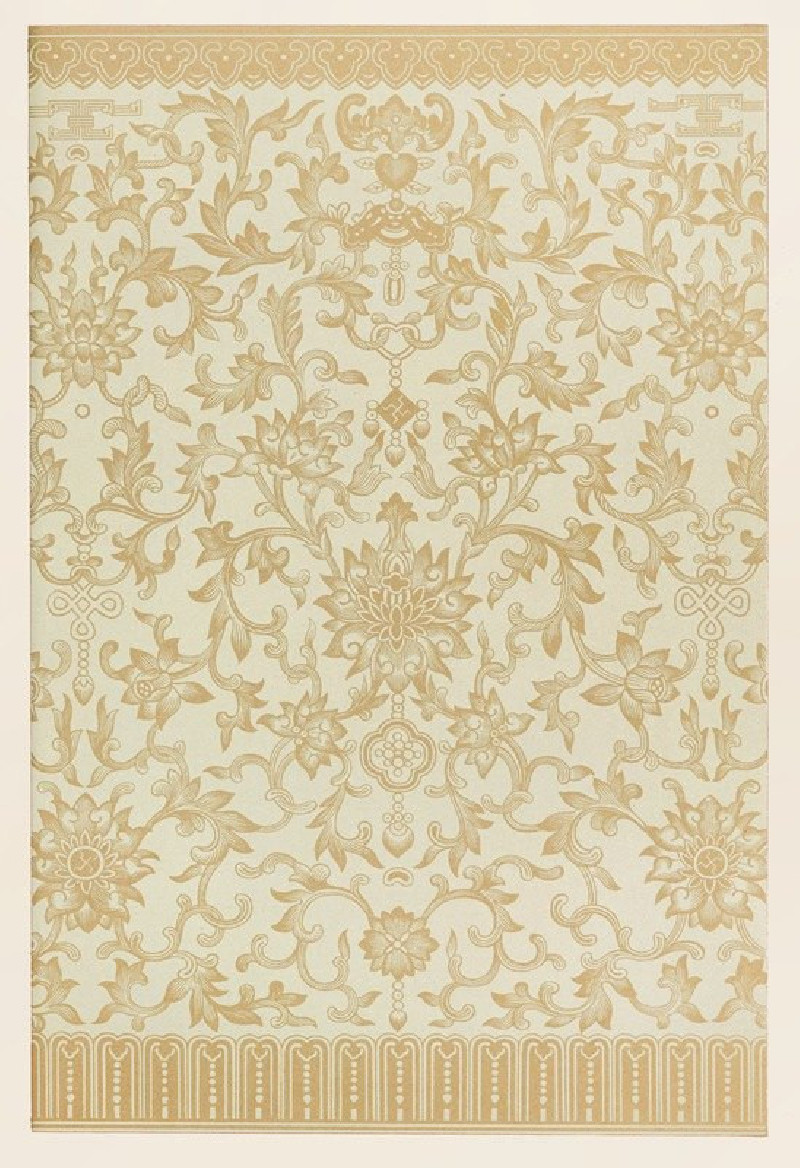
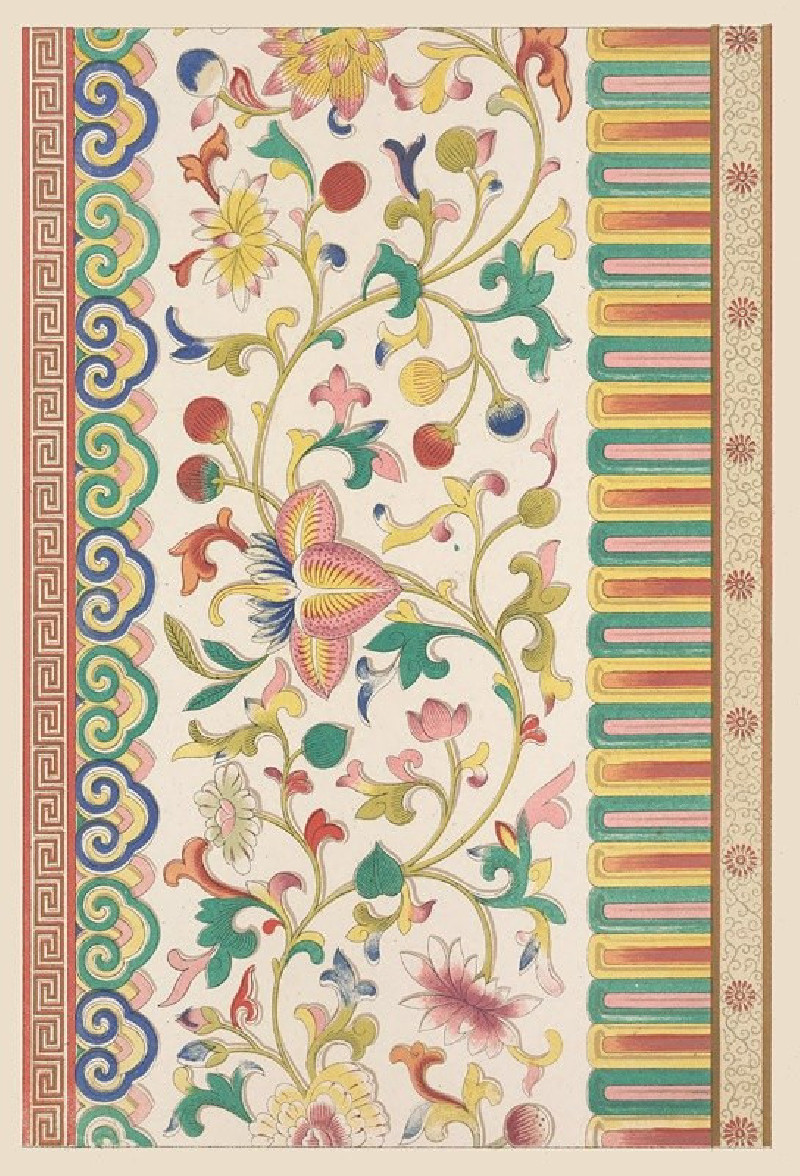
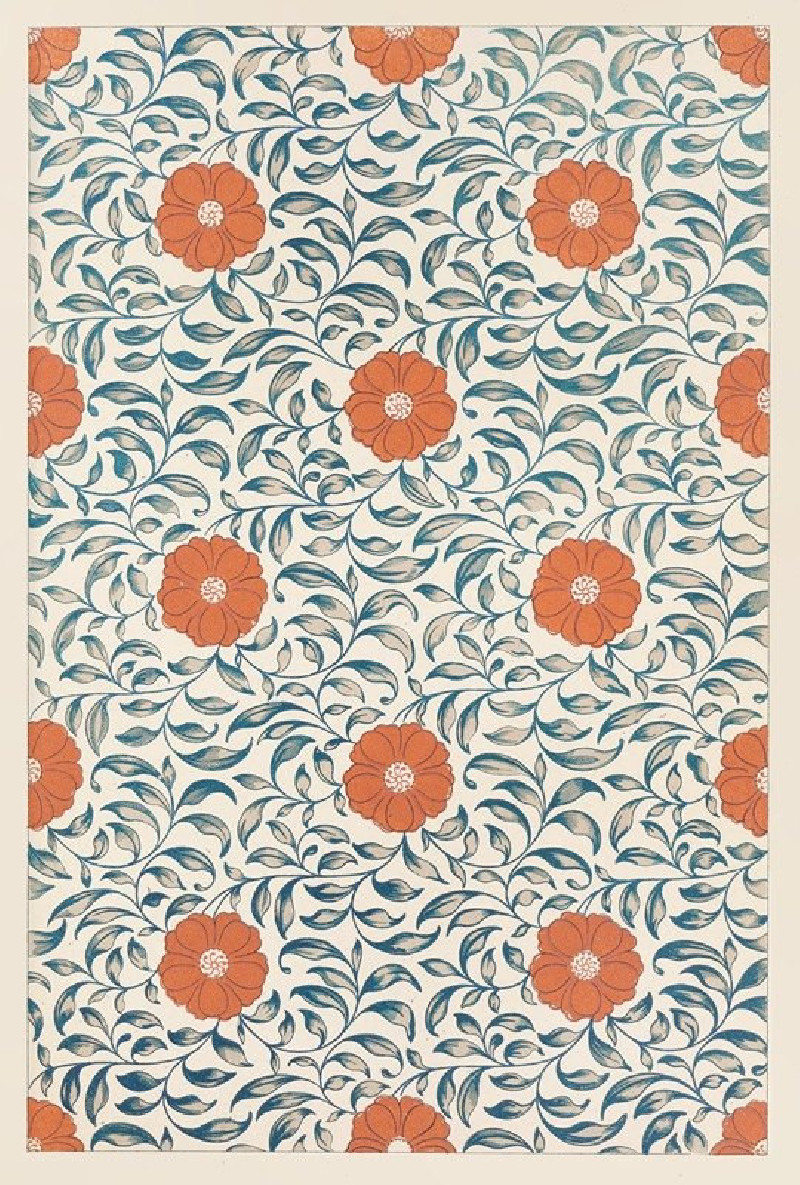

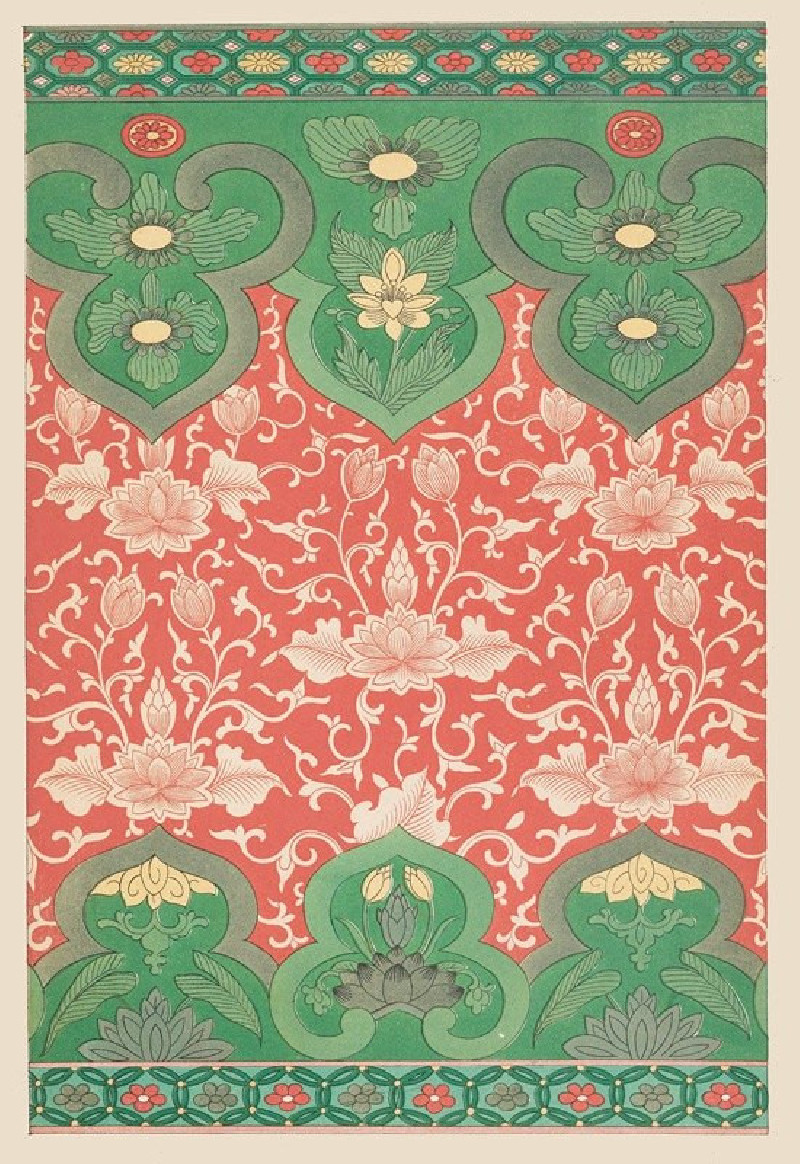
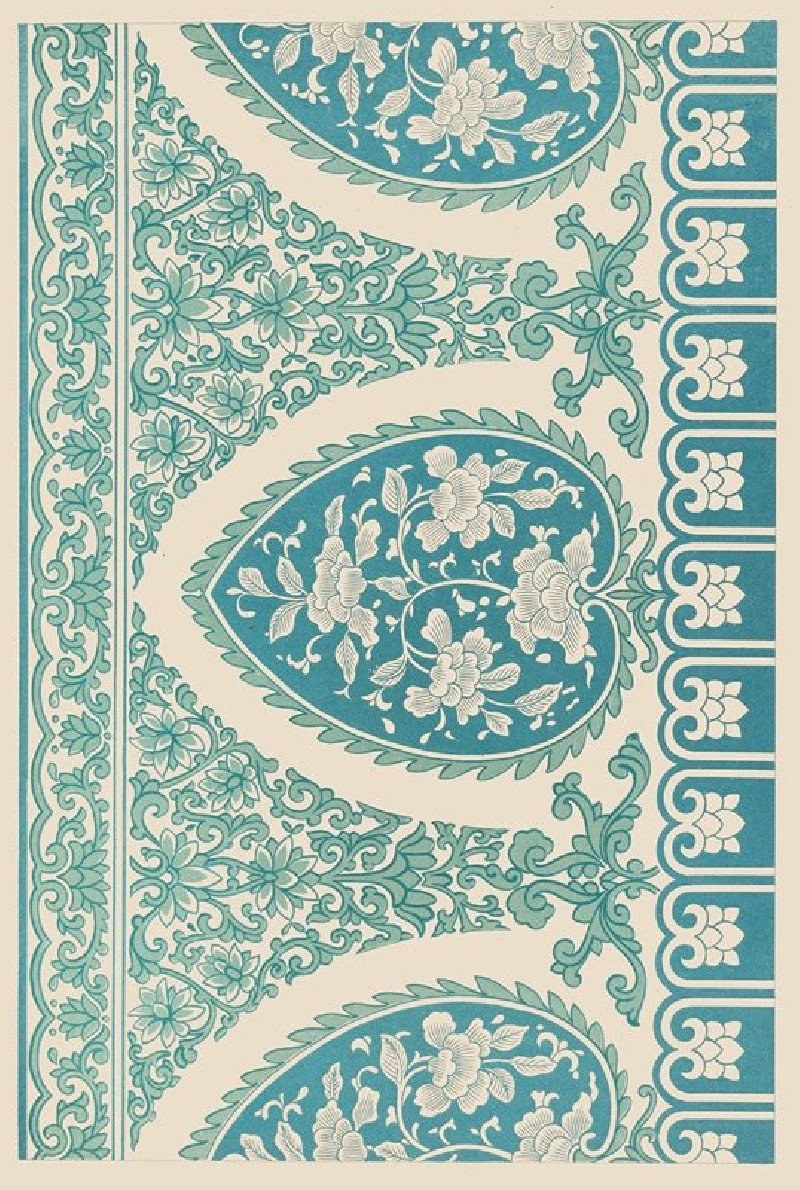

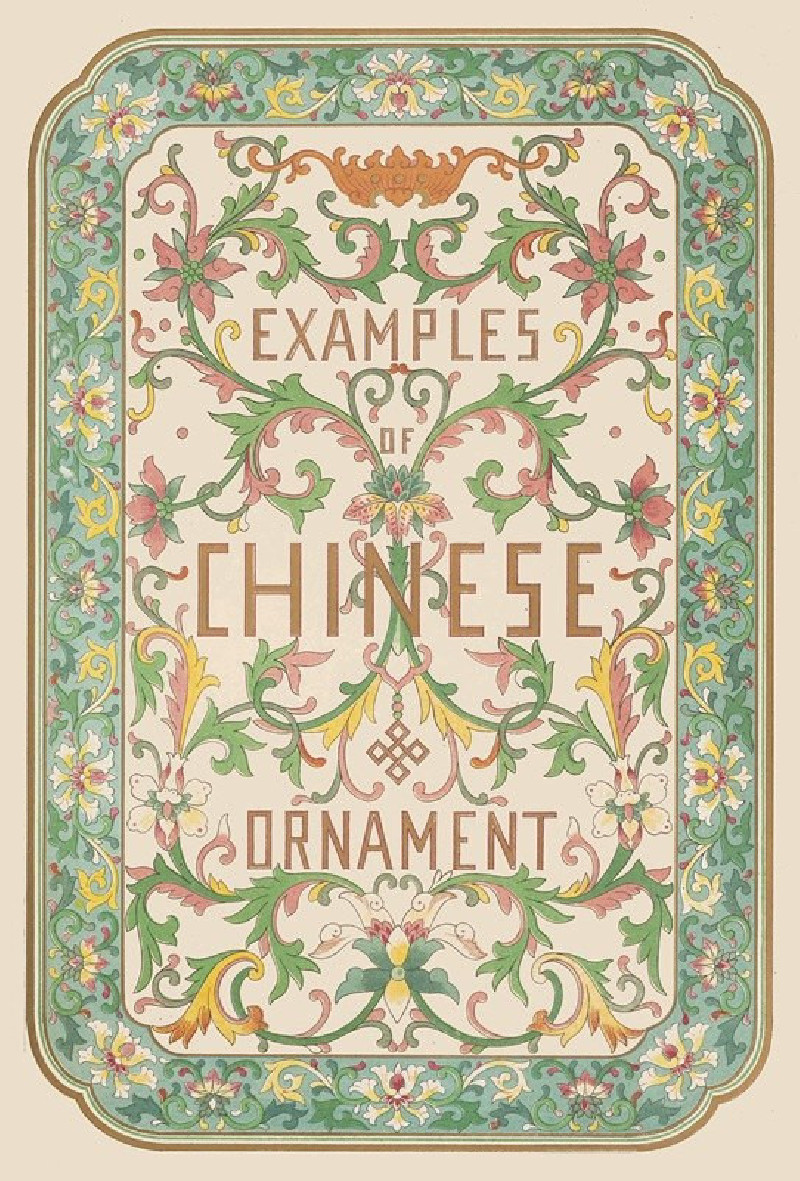
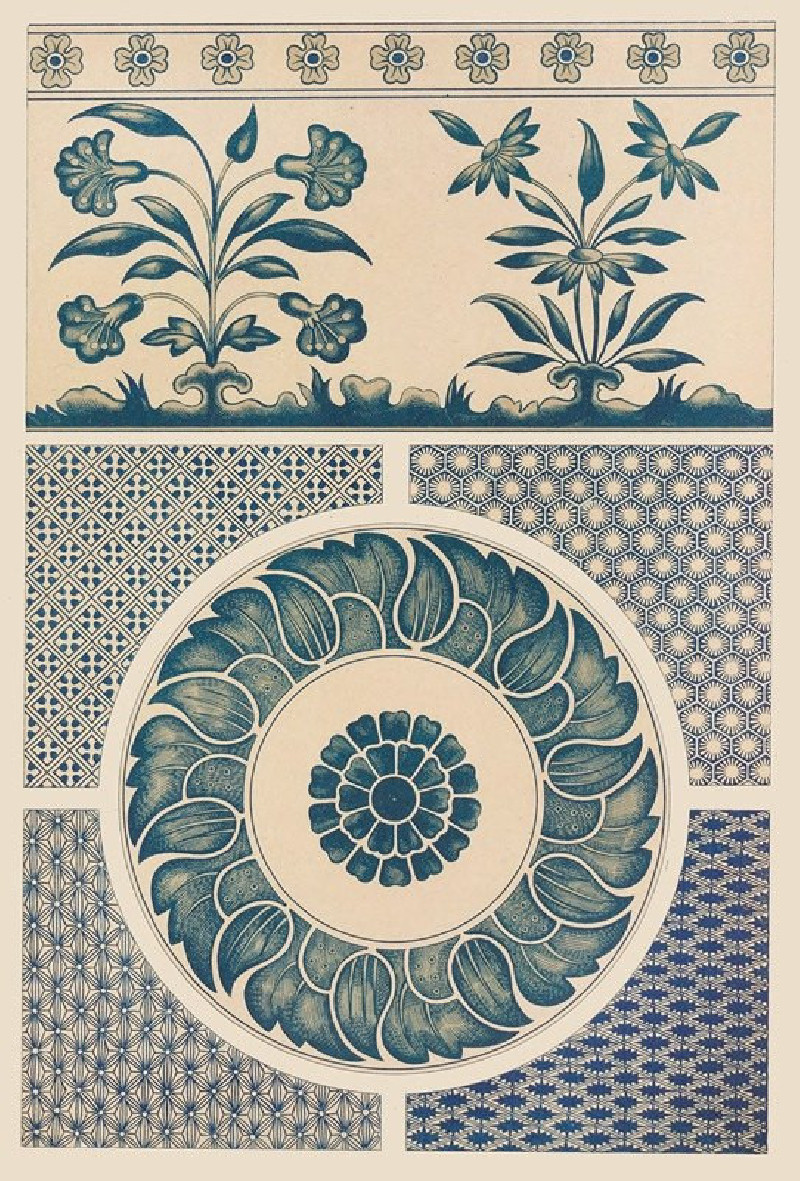

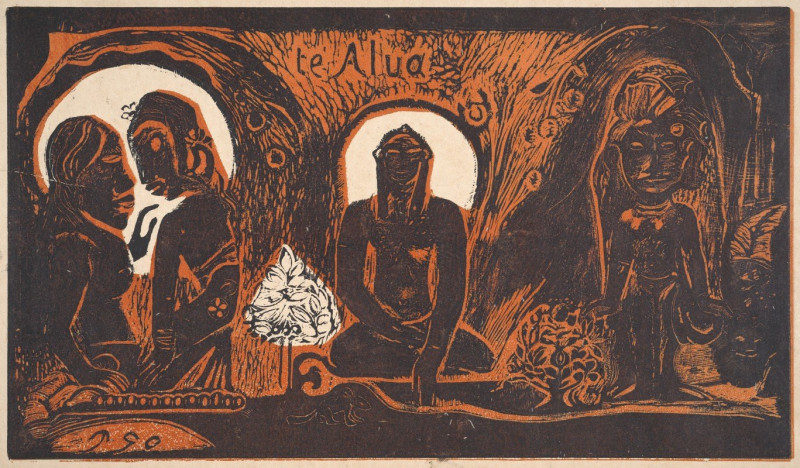
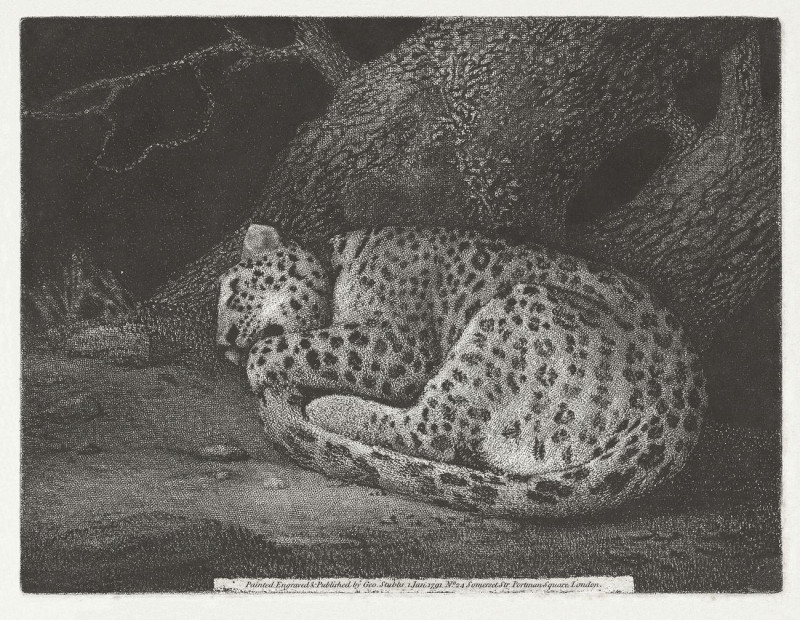


![Motiv aus Meran [A Scene in Meran] reproduction of painting by Franz Alt. ALL GICLEE PRINTS](https://reprodukcijos.lt/53970-large_default/reproduction-of-motiv-aus-meran-a-scene-in-meran.jpg)

